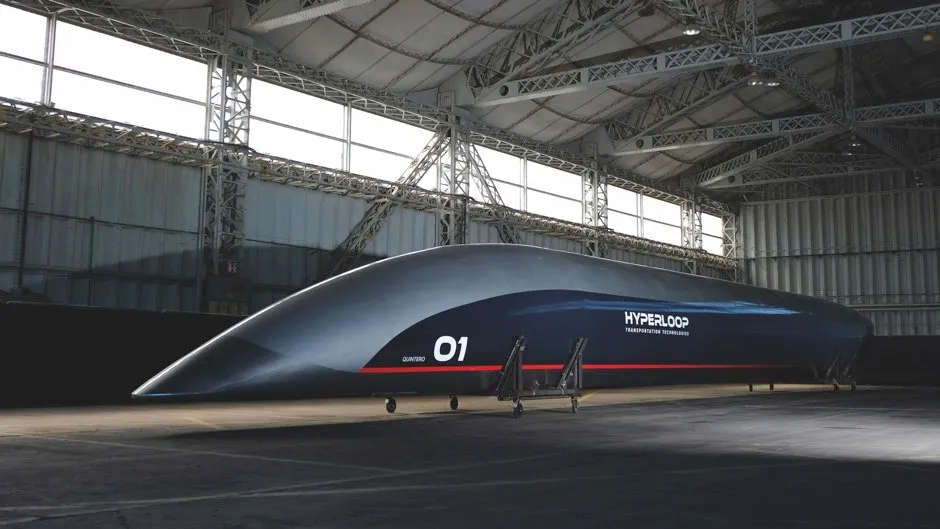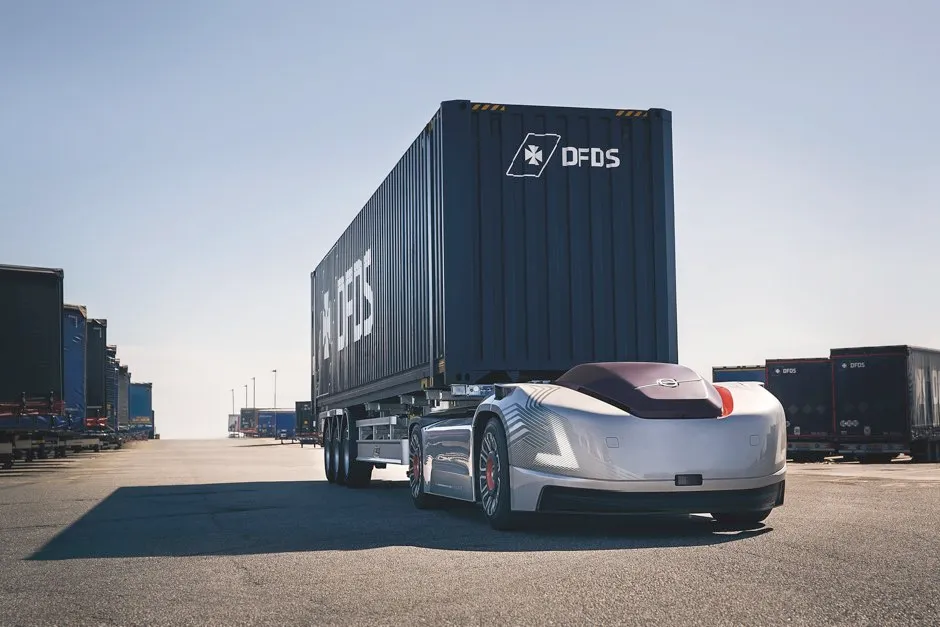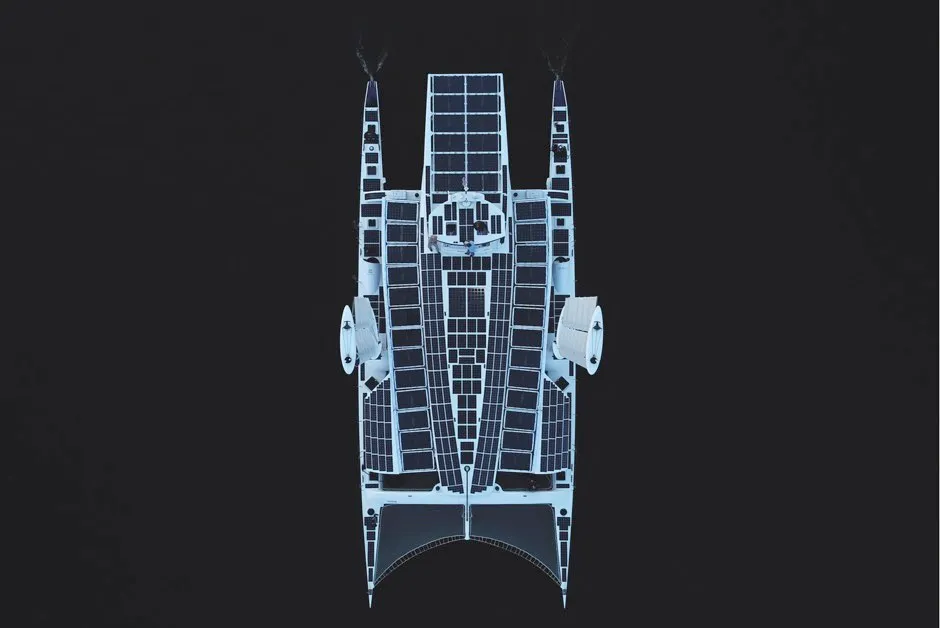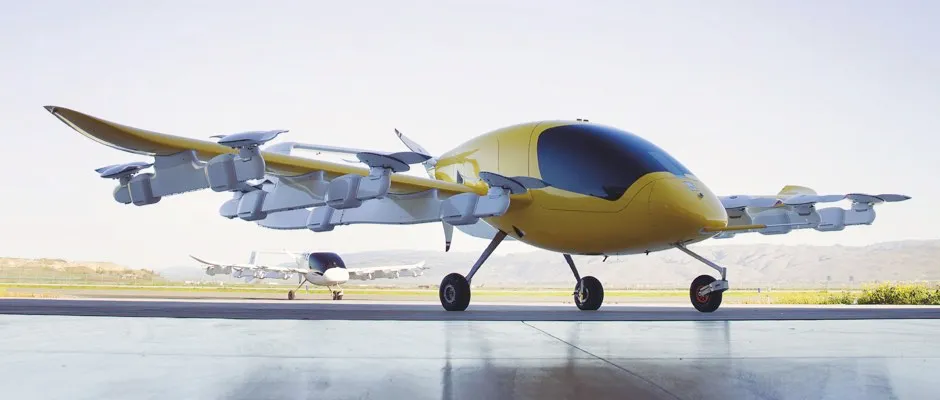1
Hyperloop

There’s been a lot of hype, but this sleek capsule built by California-based Hyperloop Transportation Technologies (HyperloopTT) shows that super-fast hyperloop travel is on its way, promising speeds of up to 1,223km/h (760mph) for city-to-city travel – faster than a commercial jet.
The full-scale, 30m capsule is being prepared for testing at HyperloopTT’s 320m test track in Toulouse, France. If all goes well, the first passenger trials will take place next year, with the aim of having the first commercial system up and running by 2022, probably in Abu Dhabi.
Hyperloop capsules will reach their high speeds by gliding through sealed tubes from which most of the air has been removed by vacuum pumps, reducing drag. The capsules are levitated just above the track using magnets, reducing friction, and powered by a ‘linear induction motor’ that also uses magnetic forces.
The Hyperloop has been hailed as the first new mode of transportation in over 100 years, but there are still significant technological challenges to overcome, such as the complexity of maintaining the vacuum in the tubes over such long distances. Nevertheless, plenty of engineering brainpower is being invested, and companies including Virgin Hyperloop One, Hardt Hyperloop and TransPod are all working on their own systems.
2
Volvo Vera truck

Lorries of the future may be barely recognisable from the ones pounding up and down motorways today. Say hello to Volvo’s self-driving truck Vera, which does away with a driver’s cab entirely.
In spite of its sleek, futuristic looks, Vera is not just a concept vehicle. Volvo is working with shipping and logistics company DFDS on a system that would use these driverless trucks to haul goods five kilometres from a transport hub to a port terminal in Gothenberg, Sweden – a route that takes in public roads. It’s expected to be up and running within five years.
Vera navigates using onboard cameras and a system that builds up a 3D laser map of its surroundings. There’s also a safety backup, enabling staff in the control centre to take control remotely if needs be.
“Driverless lorries are most likely to be used where you have a high volume of short, repetitive journeys,” says Mikael Karlsson, vice president of autonomous solutions at Volvo Trucks. Longer, more complex journeys will still be left in the hands of human drivers – at least for now.
3
Energy Observer ship

It was once a racing catamaran that won trophies and broke world records, but this boat – now called ‘Energy Observer’ – has taken on a new life as a floating laboratory aimed at revolutionising how we power ships.
Its traditional sails have been replaced by a skin of cutting-edge solar panels that power electric motors. It’s also the first ship to feature a hydrogen power generation system, using an electrolyser to split seawater into hydrogen and oxygen.
The hydrogen is compressed and stored in tanks until it’s needed, when a fuel cell converts the hydrogen back into water, releasing electrical energy in the process. Meanwhile, two rigid, 12-metre-tall ‘Oceanwings’ sit on either side of the 30-metre-long craft, providing extra wind propulsion when required.
Energy Observer is currently two years into a six-year world tour, the goal of which is to demonstrate how this green energy production and propulsion technology could be harnessed in future ships – important given that 90 per cent of global trade is transported by the sea.

It’s from this cockpit that the crew steer Energy Observer and communicate with the outside world. Doors from the cockpit lead to the brains of the boat: the Energy Management System.
Because different energy sources ebb and flow as conditions at sea change, the system is routinely switched between power sources to keep the craft running. For example, when solar power runs out at night, the hydrogen fuel cells are brought into action to convert the stored hydrogen into electricity.
4
Cora air taxi

How often have you sat in traffic, wishing you could just fly above it all? Well, Cora, a flying electric taxi, could be the answer.
It’s piloted autonomously, which means that pretty much anyone could fly in it without training. Twelve lift fans get Cora off the ground vertically, before it flies like an aircraft using a single propeller at the rear. This means it could take off from a car park or the roof of an office building, carrying its two passengers home – as long as they live within its 100-kilometre range.
Kitty Hawk Corporation, the California-based company behind Cora, envisages that you would book a trip aboard much like you do with an airline or a ride share. But how soon we’ll be able to do that is unclear – Cora still needs regulatory approval before it can operate commercially.
There’s good reason to believe it will happen, though: Kitty Hawk is funded by billionaire Google co-founder Larry Page and is working with both Boeing and Air New Zealand.
Read more about the future of transportation:
5
Mercedes-Benz Future Bus

Bus rides are set to get a 21st-Century makeover. The Mercedes-Benz Future Bus is fitted with a GPS system, cameras and radar, so it can drive itself along its route, stopping to pick up passengers along the way. All the driver needs to do is watch out for hazards, intervening with a dab on the brake or a touch of the steering wheel.
Future Bus has other tricks up its sleeve, too. Perhaps the most impressive is its ability to ‘talk’ with traffic lights using its ‘vehicle to infrastructure’ system, so it can find out when they are about to change, gently slowing down if necessary. All of this technology is designed to provide passengers with a smoother service and relieve the workload on drivers.
Although Future Bus was successfully tested on a 20-kilometre route from Schiphol Airport in the Netherlands, it will still require several million kilometres’ more testing before it can go into production. But Mercedes owner Daimler says that these kinds of technologies will be increasingly built into its buses in order to assist drivers.
Follow Science Focus onTwitter,Facebook, Instagramand Flipboard

